Five years, three new discoveries, two new mines, more to come…
Transition Resources will pursue new resources through exploration designed to lead to discovery success by expanding existing resources, geological footprints and focusing on identifying new resources as suggested by a new‐found geological model for the region.
Opportunities includes shallow oxide/sulphide ore (Cu, Au) for near‐term third‐party sale or toll treatment, whilst selectively focusing on larger exploration targets (including Tier One scale) with company making potential (Cu, Co, Au, REE).
Transition Resources exploration focus is best described as thought leadership, with a pragmatic focus on merging old‐school theories and methodologies with new geological appraisals and modern exploration methods.
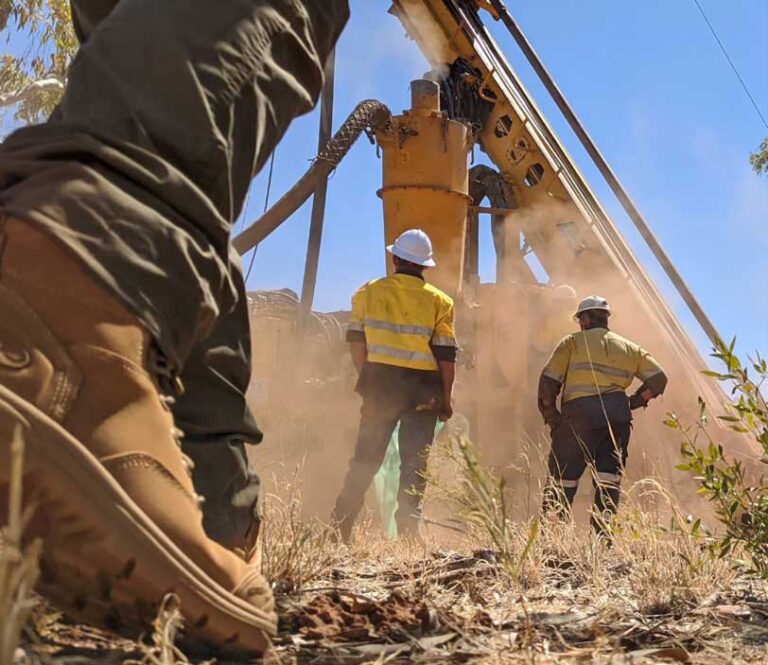
Remote Prospect identification using new proprietary methods.
In concert with its new mineral system model, Transition Resources is successfully employing a proprietary, rapid first‐pass reconnaissance method to its exploration activities.
Proprietary rapid first‐pass reconnaissance method
The method has been particularly successful in highlighting mineral system “hot spots” in remote areas where there is no historical record of mining or exploration activity, and no record of metal enrichment.
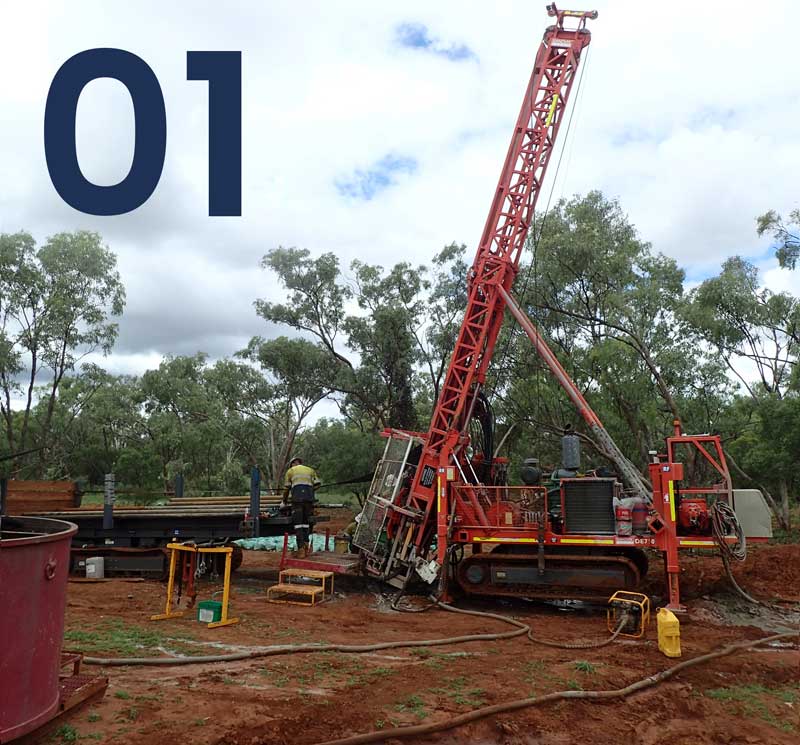
The method has been particularly successful in highlighting mineral system “hot spots” in remote areas where there is no historical record of mining or exploration activity, and no record of metal enrichment.
In concert with its new mineral system model, Transition is successfully employing a proprietary, rapid first‐pass reconnaissance method to its exploration activities.
Proprietary rapid first‐pass reconnaissance method
Transition Resouces is acquiring high‐resolution aerial photography and digital terrain models (DTMs) of key prospect areas with impressive results. This includes the remote identification of mineralised surface rocks that are identified by post‐processing (desk‐top) assessment of areas of coverage.
Drone flights are conducted at heights between 50-100m above surface, with up to 2,500 photo-tiles obtained per prospect.
Photos in plan-view and tilt are digitally merged in 3D CAD after drone-based photogrammetry for initial field reconnaissance.
Drone flights are conducted at heights between 50-100m above surface, with up to 2,500 photo-tiles obtained per prospect.
The photogrammetry process generates digital terrain models (DTMs), which facilitate additional capabilities including 3D volume calculations within a CAD environment. This is used in waste pile volume and tonnage analysis, and in identifying important geological boundaries and structures.
The photos are taken in both plan-view and tilt, then digitally combined by post-processing in a 3D CAD environment. First-pass field reconnaissance by drone-acquired photogrammetry.
Transition Resources is acquiring high‐resolution aerial photography and digital terrain models (DTMs) of key prospect areas with impressive results. This includes the remote identification of mineralised surface rocks that are identified by post‐processing (desk‐top) assessment of areas of coverage.
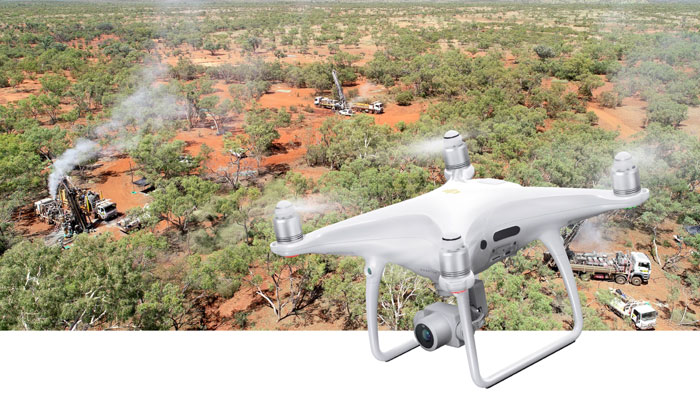
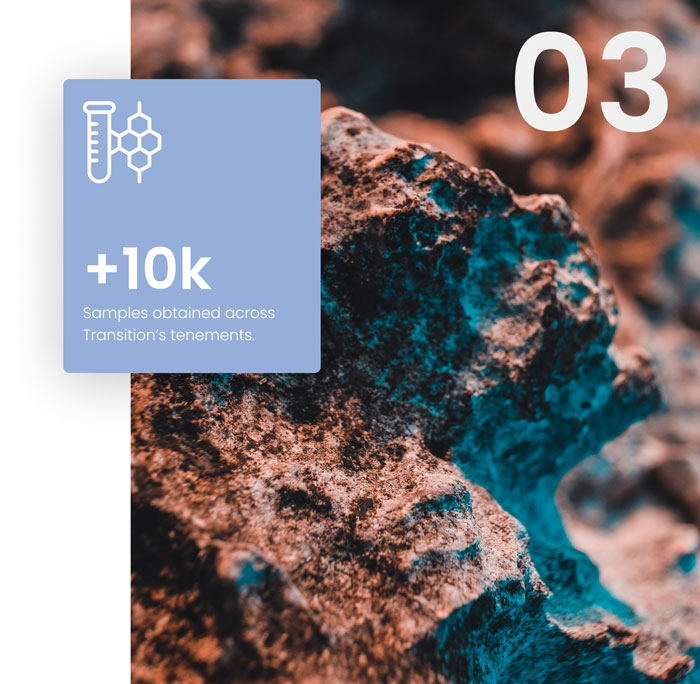
An impressive suite of historical geophysics data is available for the Cloncurry area via open‐file data records, which includes low‐resolution coverage for different types of surveys over all of Transition Resources tenements.
Over 90 square kms of high resolution surface geophysics have been completed across the tenements including Sub-Audio-Magnetics (SAM) a proprietary method of Gap Geophysics.
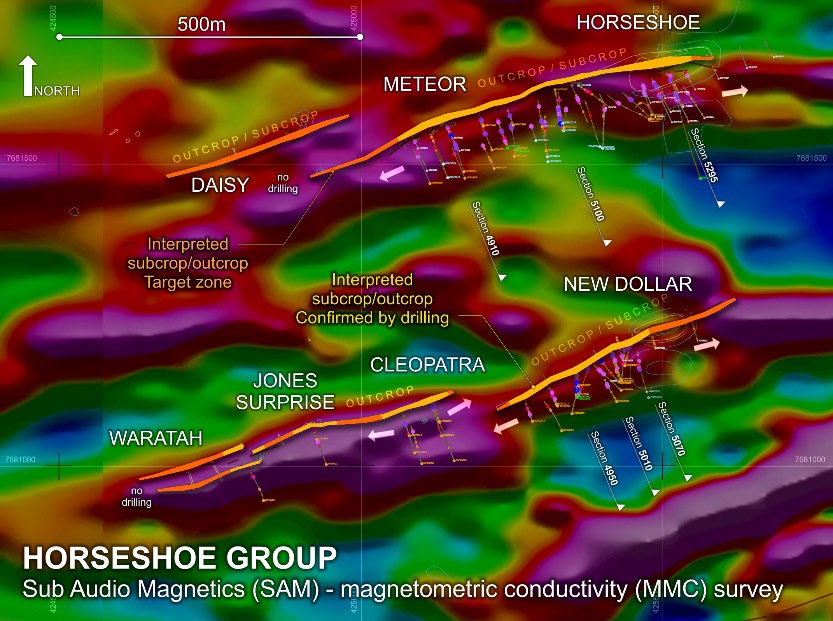
RC Drilling (Reverse circulation)
Two popular drilling methods used are reverse circulation drilling and diamond drilling. Reverse circulation drilling involves the use of a large rotary drill bit that grinds the rock into small pieces, which are then circulated to the surface through the hollow drill pipe. This method is ideal for drilling deep holes and is commonly used for mineral exploration.
Diamond Drilling
Diamond drilling, on the other hand, uses a diamond-impregnated drill bit to cut through hard rock formations. This method produces a core sample that can be analysed for mineral content and quality. Diamond drilling is often used in mining operations to extract ore samples and assess the quality of the deposit. Both drilling methods are essential for mineral exploration and extraction in Cloncurry and other mineral-rich regions around the world. This method is ideal for drilling deep holes and is commonly used for mineral exploration providing grade, mineralogical, structural and bulk density data.
corp.admin@transitionresources.com.au
San Remo 3925, Victoria, Australia

Transition Resources Pty Ltd
(ABN 45 624 842 084)
corp.admin@transitionresources.com.au
San Remo 3925, Victoria, Australia

Transition Resources Pty Ltd
(ABN 45 624 842 084)
Copyright © 2023 Transition Resources Pty Ltd • transitionresources.com.au • all rights reserved
Coded by Dynamic Code